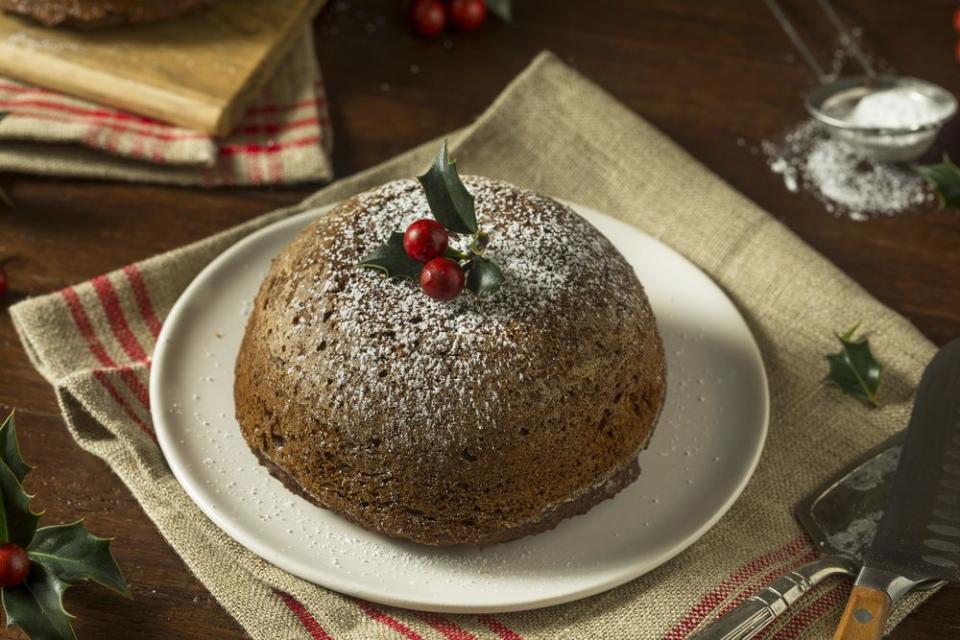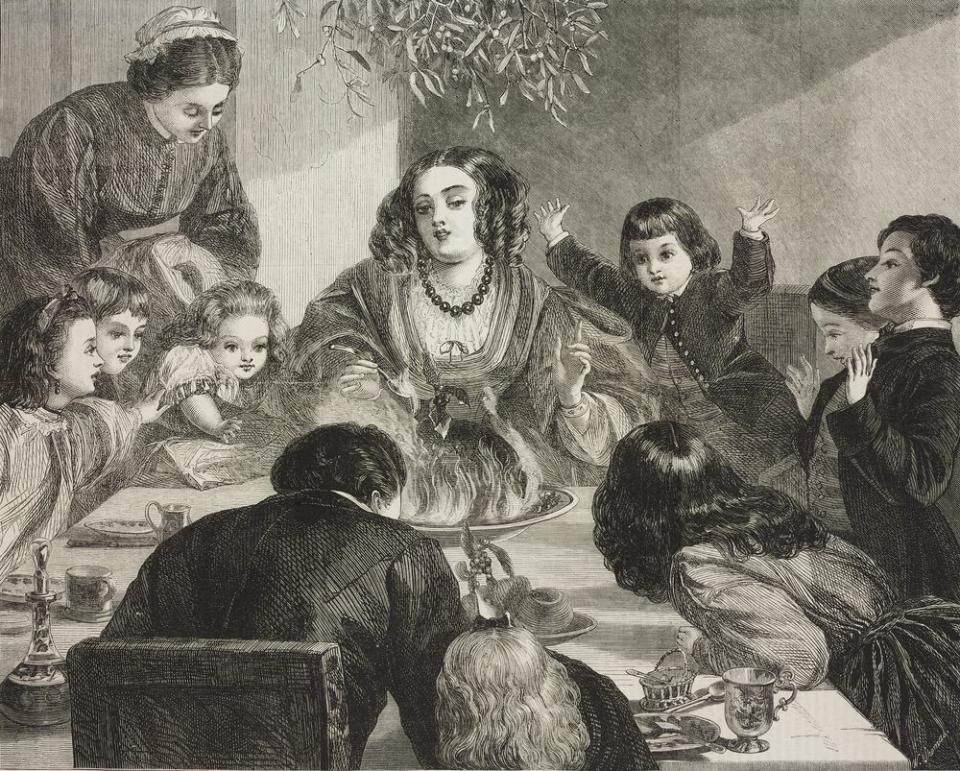What Is Figgy Pudding, Anyway?

Christmas carols, in addition to being delightful and spreading good cheer, present a lot of questions.
Like that ever-confusing line in “It’s the Most Wonderful Time of the Year” where Andy Williams declares that he’ll tell “scary ghost stories” after caroling—what Nightmare Before Christmas nonsense is this?
Who is Parson Brown and why is he so curious about a child’s marital status?
And, most importantly, what the heck is figgy pudding?
What Is Figgy Pudding?

Figgy pudding is a traditional Christmas dish made with flour, suet (a type of hard animal fat), figs, and other dried fruits.
To be clear, the British and American definitions of “pudding” are quite different.
If you’re from the U.S., the world likely evokes nostalgic memories of plastic cups filled with a thick, creamy chocolate dessert.
People in the U.K., however, will think of a sweet or savory dish—often including meat or animal fat—that is steamed or boiled.
British pudding is not one consistency. What Americans typically think of as “pudding,” many Europeans would call “custard.”
Basically, figgy pudding is a sort of soft steamed cake.
American cookbook author Dorie Greenspan told NPR in 2007 that figgy pudding is "a little bit like fruitcake."
"I was afraid to say it because fruitcake has such a bad reputation, but [figgy pudding] is steamed; it's chockablock with dried fruits; it's so boozy ... It's delicious," she said.
Figgy pudding should be aged for at least one month, and then ceremonially flambéed at the table before serving.
Flambéeing, or covering with liquor and then igniting, reduces the alcohol content of the dish while preserving the spirit’s rich, boozy flavors.
Though figgy pudding is technically different from plum pudding or Christmas pudding (figgy pudding is less rich and is easier to make, according to The Tudor Kitchen author Terry Breverton), the names are used interchangeably.
Figgy pudding is often topped with a festive sprig of holly.
Figgy Pudding History

In medieval times, figgy (or plum or Christmas) pudding was called plum pottage. To make things even more confusing, this dish wasn’t actually made with plums—it was made with plump, brandy- or wine-soaked raisins.
Though figgy pudding is a thoroughly secular dish these days, its history is deeply rooted in religion: It is said that the dish is made with 13 ingredients to represent the 12 apostles and Jesus, while the traditional sprig of holly symbolizes the crown of thorns.
The pudding is cemented in popular culture through two iconic holiday classics: 1. A Christmas Carol by Charles Dickens and 2. “We Wish You a Merry Christmas,” a literal Christmas carol from the West Country of England.
In Dickens’ story, Mrs. Cratchit (the wife of Ebenezer Scrooge’s clerk, Bob Cratchit) prepares a festive holiday feast for her family that culminates in the ceremonial presentation of Christmas pudding.
“In half a minute Mrs. Cratchit entered—flushed, but smiling proudly—with the pudding, like a speckled cannon-ball, so hard and firm, blazing in half of half-a-quarter of ignited brandy, and bedight with Christmas holly stuck into the top.”
If you don’t spend every December under a rock, you’re likely familiar with “We Wish You a Merry Christmas.” These are the undeniably catchy lyrics which feature the traditional dish (good luck getting them out of your head):
Oh, bring us a figgy pudding; Oh, bring us a figgy pudding; Oh, bring us a figgy pudding and a cup of good cheer
Figgy Pudding Traditions
Since proper figgy pudding is prepared weeks in advance, the Sunday before the beginning of the Advent season is known as “Stir-up Sunday.”
The name has a double meaning: The prayer for the day in the Book of Common Prayer begins with the words, “Stir up, we beseech thee, O Lord, the wills of thy faithful people.” It’s now a tradition for families to prepare (or stir up) a pudding on this day.
It’s less common today, but the inclusion of small trinkets or tokens in figgy pudding during medieval times forced people to eat their portions very carefully.
Each trinket meant something different about the recipient’s fortune: A wishbone meant good luck, an anchor meant safety, and a coin meant wealth.
How to Make Figgy Pudding

Traditional figgy pudding is boiled in a pudding cloth, which is similar to a cheesecloth.
Nowadays, bakers have more options.
We’re partial to this delicious and relatively easy Brown Butter Figgy Pudding—it’s cooked in a Bundt pan, which makes preparation a breeze.

